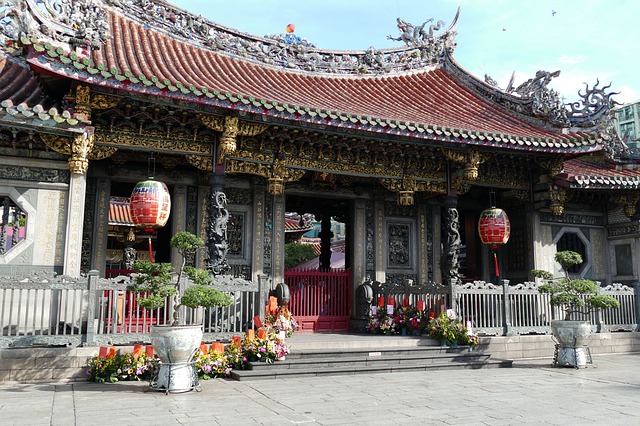Just like all aspects of construction, roofing has a rich history. Architecture reflects the technology available, and the culture and personality of the country or area. It is interesting how humans are so fascinated by the visual and aesthetic, and it is always a fine balance with functionality. Roofing exemplifies this. Roofing has a huge impact on how a building looks and is a great way to showcase the personality of said building. All around the world, roofing technology has its own story depending on the geography, something that we find fascinating. We’re going to take a look at some different roofing styles from cultures around the world. We have a real appreciation for our trade, as we’ll demonstrate when you need a roofer in Nottingham.
Thatched Roofing
Immediately when you hear “thatched roof”, you think of images of quaint English villages with their small thatched cottages. Thatch has a very particular character and was a central part of the improvement of shelter throughout the centuries. Although it might be thought of as an English thing, thatch was popular elsewhere in Europe and around the world. It still remains important in rural areas of very underdeveloped areas, where local, long, dry grasses are the only easily available material. Thatched roofs typically have quite a high slope angle, in order to avoid getting waterlogged.
Domed Roofs
Domed roofs have a long history. The earliest known domes date back over 10,000 years, where local materials were constructed into small, rounded shelters. However, the actual documentation of their development is relatively scarce.
In more modern times, domes became popular in places of worship, such as cathedrals. Not only would they look stunning from both the outside and the inside (think about the Vatican), but the shape would create unique internal acoustics. Particularly for choral music, the echo and different sounds at different points in the building would give the place that more “holy” feel.
Domes have been popular in many different cultures throughout history. It is likely that their influence spread from Mesopotamia, to be used much further afield. They were popular across the Arabic world, as well as throughout Europe. Bright, multi-domed churches are a feature of Russian architecture.
East Asia
East Asian countries such as China, Japan, and Thailand, take a huge amount of pride in their history and their ability to make their architecture look stunning. Despite the prevalence of earthquakes in Japan that can instantly collapse buildings, they still create wonderfully ornate styles. Look at this roof from Taiwan. The curved styles are very common, which create a completely different feel to sharp slopes. These are possible when there is relatively little rain and snow, so water logging is less likely. Curved roofs were believed by Buddhists to ward off evil spirits, because said spirits were thought to only be able to move in straight lines! Notice the numerous colours, as well as the attention to detail of the stonework across the roof edges. Often their roofs are tiered, forming what’s called a pagoda which look very elaborate. Pagodas were typically built with a religious perspective in mind, hence the curvature to keep evil spirits away. The tiers can be cleverly built to maximise ventilation, keeping the inside cool.
Australia
The “Queenslander” is a quintessential Australian home, originating in the 1840’s but still being popular in newer builds today. These homes are high set, one story, and have corrugated iron roofs. Metal roofs have their advantages and disadvantages, with many dismissing metal because of the danger of a less natural, more industrial look. However, metal certainly has its place, and especially in a country as hot as Australia. Due to its reflective properties, and ability to absorb heat that doesn’t get reflected, metal roofs are excellent for keeping homes cool in the summer. Metal roofing tends to be quite expensive, but certainly in hot places the outlay is absolutely worth it. We’ll write a full article on the pros and cons of metal roofing in the future!
Ultimately, roofing is first and foremost about functionality. However, it’s really amazing to look at images of roofing around the world and trying to appreciate the culture that created something so unique. As a roofing company, we find the history fascinating. Seeing the care that goes into something like a roof is very humbling, as they’re often not appreciated beyond their function. Next time you visit a new city, their traditional buildings, houses, and places of worship, pay close attention to the styles of roofing. It’s amazing to think about how they and why they were built!
Check us out on mybuilder, and also at the social media links below!

